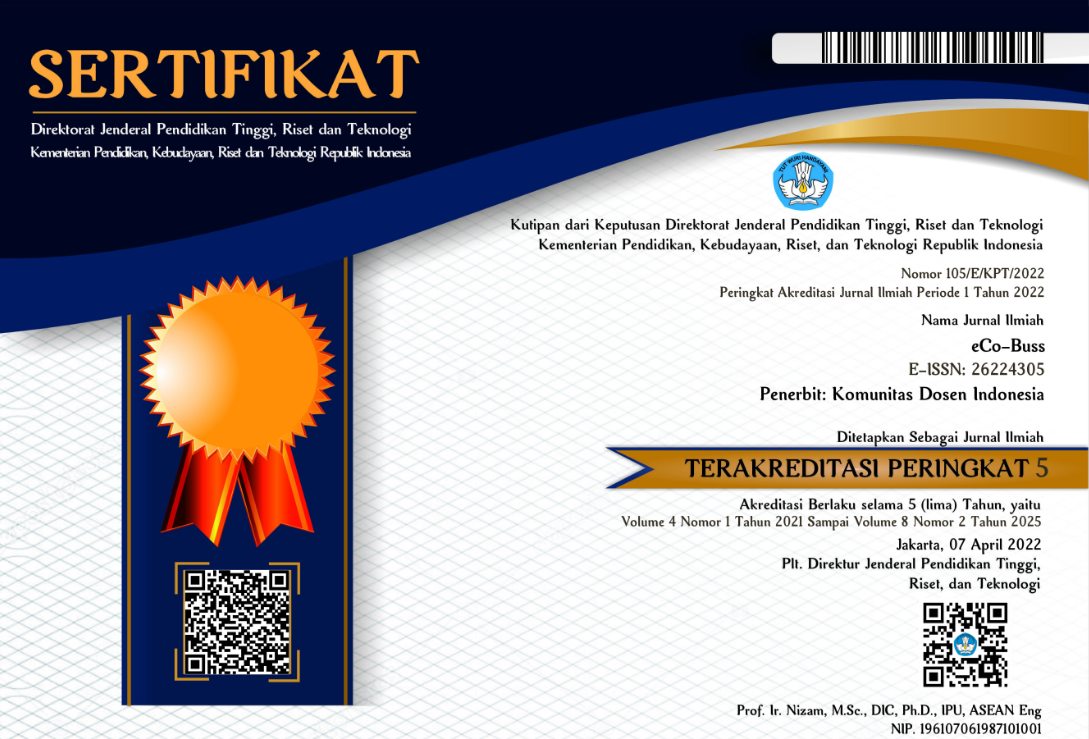Analisis Piutang Usaha Dan Tingkat Laba Yang Dihasilkan Pada PT Kimia Farma Tbk Yang Terdaftar Di Bursa Efek Indonesia (BEI)
DOI:
https://doi.org/10.32877/eb.v6i2.883
Keywords:
Accounts Receivable, Profit Rate, Financial Statements, Receivable Turn Over, Net Profit Margin
Abstract
This study aims to identify and analyze accounts receivable and the level of profit generated at PT.Kimia Farma Tbk which is listed on the Indonesia Stock Exchange (IDX). The research method used in this research is qualitative komparatif. The data analysis technique used in this study is descriptive qualitative komparatif and is calculated using Receivable Turn Over and Net Profit Margin (NPM) indicators. The results of the analysis of accounts receivable with Receivable Turn Over indicators at PT.Kimia Farma Tbk in 2018 were 6.3 times, in 2019 they rotated 4.4 times, in 2020 they were 6.5 times, in 2021 they rotated 6.6 times and in 2022 as many as 5.2 times indicating that the collection of receivables in 2018-2022 was not successful because it was below the industry standard that had been set, which was 15 times. The results of the profit rate analysis with the Net Profit Margin indicator at PT.Kimia Farma Tbk in 2018 amounted to 6.32%, 2019 amounted to 0.16%, 2020 amounted to 0.20%, 2021 amounted to 2.25% and in 2022 amounted to -1.14% indicates that financial management in 2018-2022 is not good because it is below the established industry standard rate of 20%.
Downloads
Downloads
Published
How to Cite
Issue
Section
License
Copyright (c) 2023 eCo-Buss

This work is licensed under a Creative Commons Attribution-ShareAlike 4.0 International License.






 DOI :
DOI :
 Abstract views: 232
/
Abstract views: 232
/  PDF downloads: 230
PDF downloads: 230

